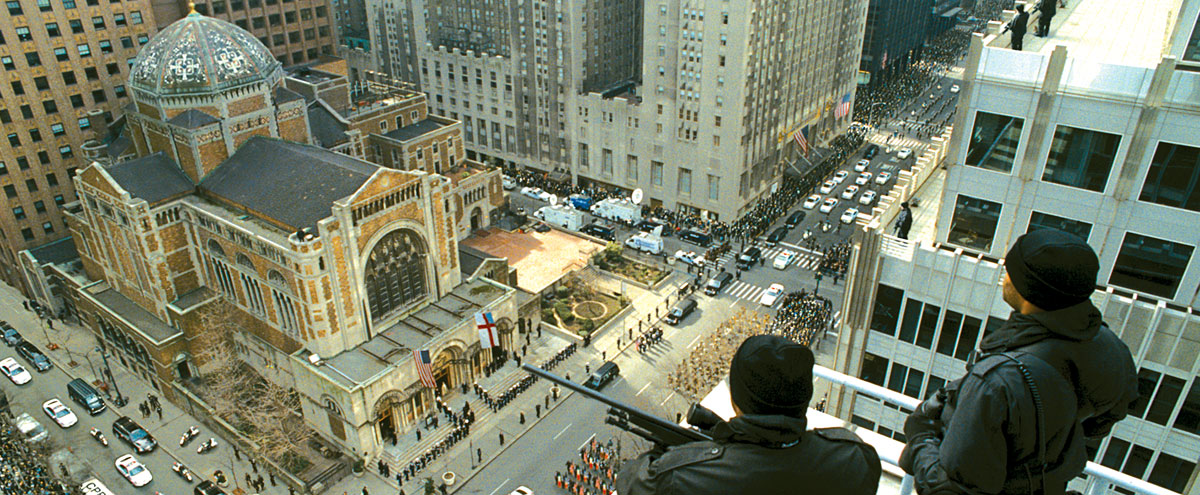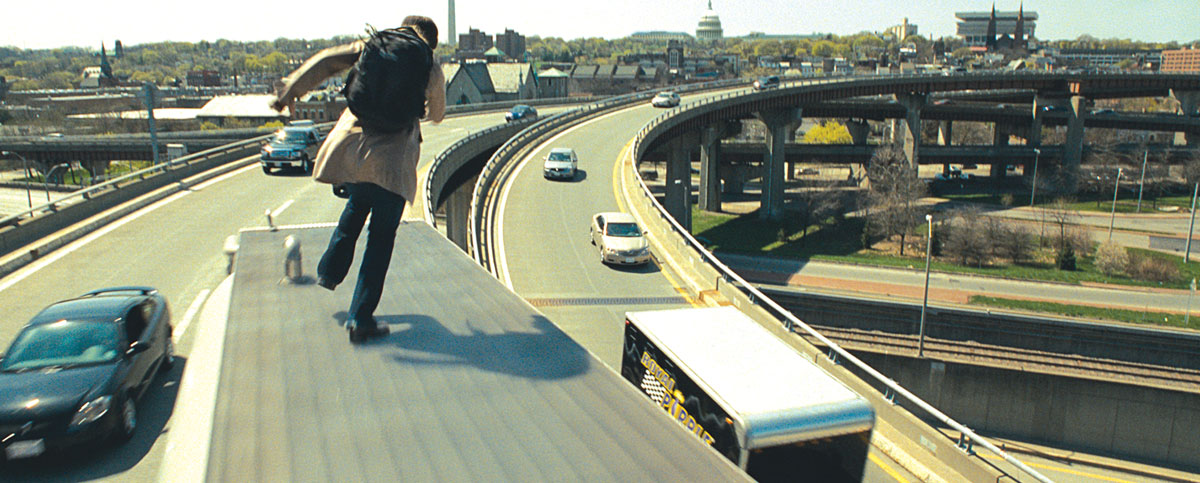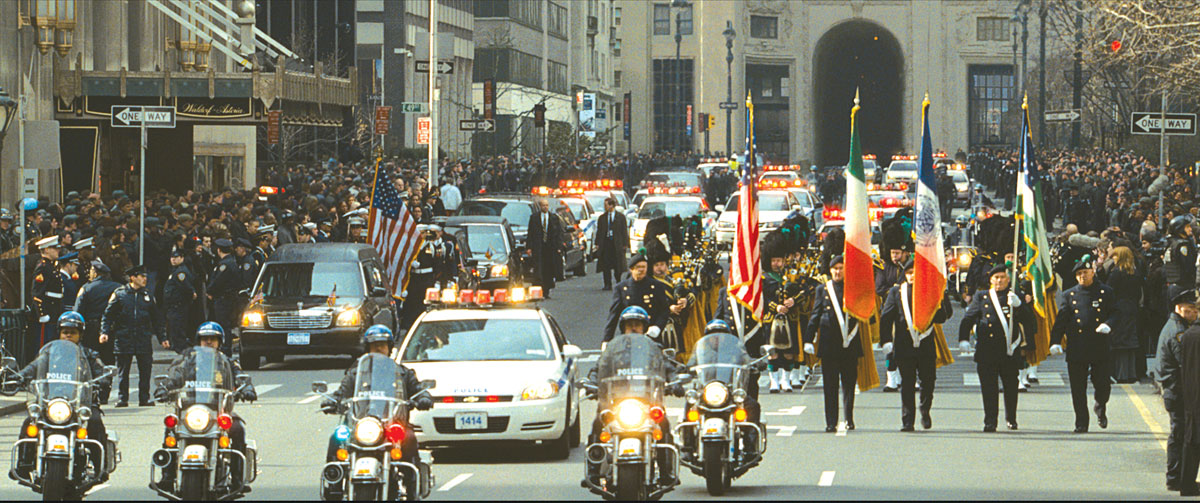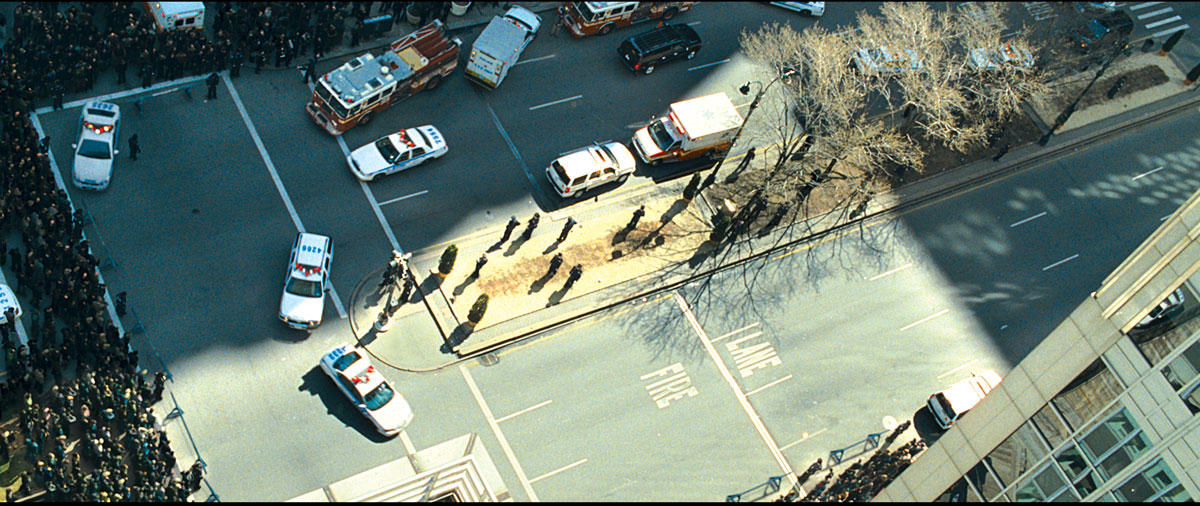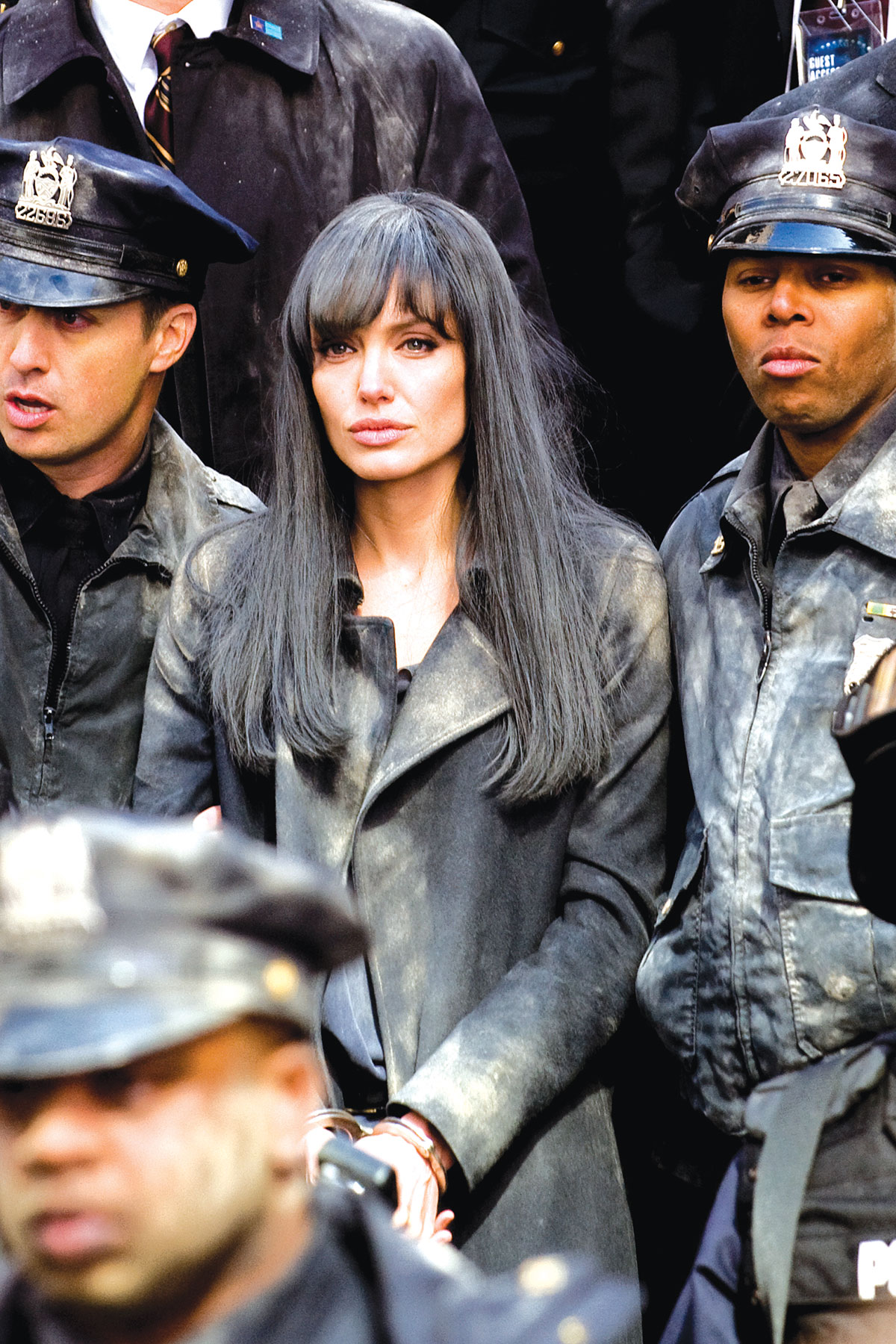|
From Framestore’s initial package of 70 shots, the total number raced up to over 300 shots by the time the work was completed. The team worked on a number of distinct, intense sequences throughout the film. Already close to the New York shoot location, Framestore entered the project during preproduction in March 2009.
Framestore’s London and Iceland facilities gave the team flexibility to take on the additional shots, helping with tracking and paint and rotoscoping, often needed for stunt work and 3D replacements. Post went through two iterations. The first delivery was late in November 2009. After reviewing the film, the director decided on some re-shoots resulting in another five months’ work in early 2010.
Story Support
Toward the beginning of the movie, Salt has been accused of being a Russian spy and escapes from the CIA premises out onto the freeway in Washington DC. It was shot on location and in Albany, New York where much of the stunt work was captured.
The director Phillip Noyce needed the effects to look perfectly real and serve as invisible support for the story, which is fast-paced and often violent. This sequence was an opportunity for VFX Supervisor Ivan Moran to work not only with Phillip but also the director of the 2nd unit, the ‘action unit’ on this project, during on-set supervision. “We tried to come up with ways to either shoot the stunts live action, with a little help from us, or shoot plates followed by blue screen shots later for safety or to save time. Meanwhile we were also replacing a lot of buildings and skylines in the Albany backgrounds with elements we had shot in Washington DC.”
Trying to evade her pursuers, Salt leaps from freeway bridges and the tops of passing trucks. Actor Angelina Jolie performed many of the stunts herself, but to keep her safe on the moving vehicles she was heavily protected with ropes and harnesses, all of which had to be removed from the footage. “The hardest part was shooting while driving along the freeways and streets, recording everything very quickly,” Ivan said. “We might have caught the perfect performance but there would be ropes or hair over her face, which are tricky to remove.”
Warping Tools
The major shot in the sequence is the first when Salt rolls off a bridge onto the top of a truck, combining a plate with the truck with a blue screen action shot. The team had to alter the timing of the truck and traffic to match the blue screen performance. This cuts quickly into a shot in which she lands on the truck and rolls up abruptly to face camera. The 2nd unit director was keen to reveal to the audience at that moment that this character was in fact Evelyn Salt.
However, this part of the stunt was actually too dangerous, which meant cutting together the shot of the stunt actor landing on the truck to one of Angelina, allowing the edit to look like a single shot. Inferno was useful because of its warping tools to morph the images together, with Nuke plus their own Shake tools for compositing. “We tend to use all of these applications in different combinations,” Ivan said. “Nuke often has a faster workflow and is very strong in some areas like projection mapping, environment and building work. On the other hand, we’ve already built a lot of creature tools in Shake.”
Funeral Procession
In a later sequence, Salt leaps from a New York subway train and escapes through a hidden door into the crypt of a large church in Park Avenue where the US Vice President's funeral is to be held. Ivan’s team shot plates of the moving train and the section of the subway where she jumps out, with the train moving in the background.
Later, she was shot on a subway carriage on blue screen. For the actual jump, a stunt actor was shot on blue screen moving along on a cart-like mechanism that they matched to the speed of the train on the subway. As she jumps and lands, they did a similar trick as on the freeway, morphing through to Angelina herself as she finishes a roll onto camera, again making it appear as one actor and one shot.
Salt needs to reach the crypt to await the arrival of the funeral procession outside in the street, where Framestore created extensive 3D crowds. The set was also extended to make the street much longer and the procession much bigger. “Phillip was looking for a feeling of grandeur for the event, and we added a number of CG vehicles as well as policemen and various blue screen effects elements,” said Theo Jones, CG Supervisor.
|
|
Sense of Scale
His team needed to add a sense of scale to the procession. “About 600 to 700 extras had gathered but were soon swallowed up in the big New York avenue so our main job was to extend the crown back down the street, increasing it up to about 15,000 people in some shots. We used a Massive crowd pipeline, lighting the scene with Maya and rendering with mental ray.
“On the day of the shoot, we shot lots of stills of the extras and used these to texture the crowd and get their looks right. We built enough CG police cars and motorbikes to look as though the procession extended right down the avenue, with hundreds of people in the procession and thousands of spectators. We’ve had quite a lot of experience with crowds like this and have a solid pipeline, and it worked out well for us,” Theo said.
They also produced matte paintings for the avenue shots because, as is often the case in New York, a lot of scaffolding and unsightly buildings had to be repaired or replaced to give the street a more gracious look. Lighting was matched by recording HDRI images along five or six blocks up the avenue at three different times of day to use on crowds and replacements.
Inside the church, where Salt detonates a bomb in the crypt and the floor collapses under the Russian President, some 3D work was required to set the pipe organ in the church shaking and rattling. Theo said, “We couldn’t get the right camera angles for the close up shots we needed of the organ and had to replace them digitally.
CG Collapse
“For the collapse of the floor, the church wouldn’t allow any practical effects to be staged, of course, but Ivan attended a studio shoot where a replica of the floor on which the President stood was rigged to collapse allowing the actor to fall through onto a stage. He captured several practical effects but the shoot wasn’t really adequate for what we needed, and in the end we had to replace the floor with a CG asset.
“For the break-up, Houdini was very useful for creating cracks to choreograph with the camera and timing of the fall, introducing much more dynamism – more cracking, debris and control over the sequence of shots - into quite a dramatic scene. For dust and airborne particles we could use a mix of smoke elements from the studio shoot layered with a lot of CG masonry and other bits.” Ivan and Theo rate this sequence as the most demanding and interesting, as it involved working with the director and editor to leave the audience in doubt about just when the President had been killed.
After Salt is apprehended, she is arrested and taken away in a police SUV in a convoy but makes another spectacular getaway in spite of her handcuffs. She seizes control of the driver by shooting him in the shoulder with a police Taser gun, requiring the team to add 3D Taser prongs to the shots throughout the sequence. In the climactic shots, she sends the car off the 59th Street Bridge and smashes into a row of cars and taxis below.
Acting on Impact
Obviously, no driver could achieve this practically, but an appropriately painted stunt car was pulled off a bridge to tumble into a row of cars. To avoid having to stage this repeatedly to get it right, the shoot was covered with about 15 to 20 cameras at multiple angles. It was a good strategy but meant that many of the shots used needed to have some of the other cameras removed. For the actual crash, one camera was placed inside the vehicle for a backseat passenger’s-eye-view of the impact, although they didn’t know if it would survive the fall or not.
Fortunately, it did. It proved extremely useful later for Angelina as she performed for the blue screen shoot of her actions inside the car. First, the multiple views and the interior shot helped her prepare her performance, which ended with airbags inflating to break her fall. “On the bluescreen stage, of course, it was just Angelina and the airbags. It would have been very hard for her to gauge the timing and extent of here actions without that interior shot. But, on set, we could also quickly composite her takes with the impact footage, review it with the director and decide how to improve the next take. It took out a lot of the guesswork,” said Ivan.
Integrated Composite
Nevertheless, the composite of the entire sequence - from the point of overcoming the driver through to the crash – was complex, including broken glass, policemen thrown from the vehicle, dust and debris. “Debris travelling past the camera was important to selling such as extreme action sequence,” explained Theo.
|

